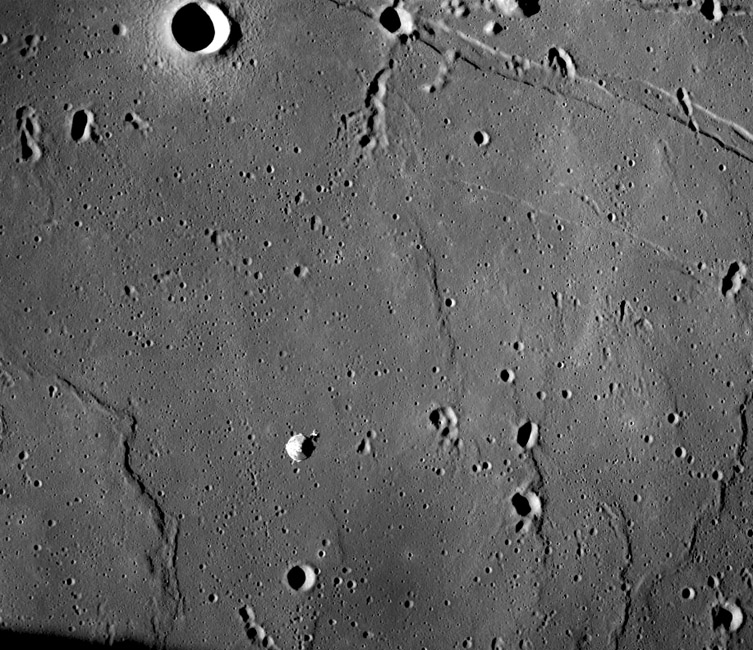Difference between revisions of "July 20, 2011"
| Line 12: | Line 12: | ||
Rükl plate [http://the-moon.wikispaces.com/R%C3%BCkl+35 35]<br /> | Rükl plate [http://the-moon.wikispaces.com/R%C3%BCkl+35 35]<br /> | ||
<br /> | <br /> | ||
| + | <p><b>Yesterday's LPOD:</b> [[July 19, 2011|Breaking Records]] </p> | ||
| + | <p><b>Tomorrow's LPOD:</b> [[July 21, 2011|Light Plains And Little Cuts]] </p> | ||
<hr /> | <hr /> | ||
Revision as of 12:02, 7 February 2015
One Small Spaceship for Man

Apollo 11 image AS11-37-5447 from Apollo 11 Journal Multimedia
Where were you 42 years ago? I had just returned to the US from two years in Kenya as a Peace Corps volunteer, and was in Boston visiting my friend Clark Chapman, a graduate student at MIT. Clark and I sprawled across his living room floor closely staring at the TV and listening to every instant of the Apollo 11 landing. We didn't see this photo until later after the crew safely returned home. It shows the command module Columbia looking about the same size as the crater later named Collins just below it. Moltke, a 6 km wide crater that we can see with backyard telescopes is visible at top right near the Hypatia Rilles, or US Highway 1 as the astronauts called it.. The Cat's Paw cluster of craters to the right of the Columbia, like most of the irregular craters seen here, was formed by ejecta from Theophilus. Armstrong and Aldrin landed at the last moment at an inconspicuous spot between the command module and the Cat's Paw. LRO can see it but we can't from Earth.
Chuck Wood
Related Links
Rükl plate 35
Yesterday's LPOD: Breaking Records
Tomorrow's LPOD: Light Plains And Little Cuts



